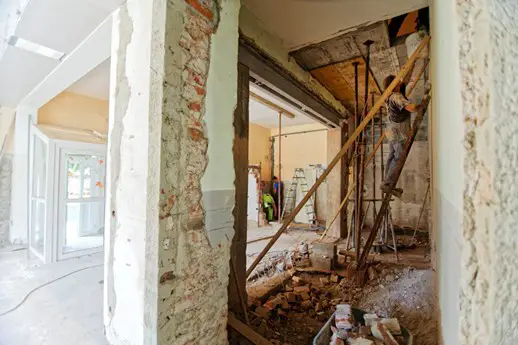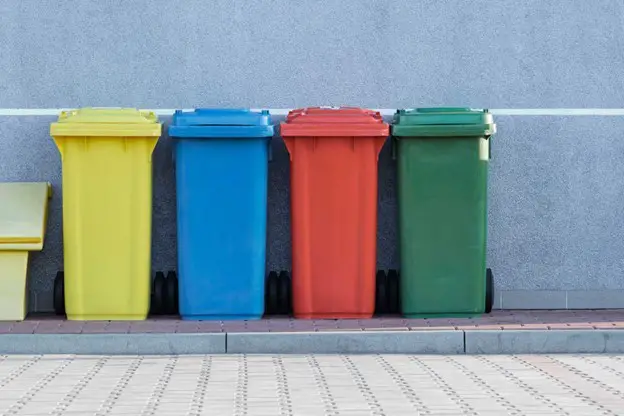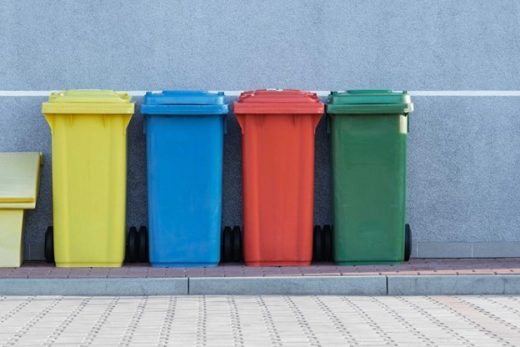Best practices and challenges for renovation waste sorting and disposal, Junk removal, Rubbish moving services guide
Renovation Waste Sorting and Disposal Systems
11 May 2023
Renovation projects can be exciting, whether you’re updating your home or office space. However, the trash generated during the process often ends up in landfills, contributing to the growing waste problem in our world. That’s why it’s essential to prioritize proper waste management, including sorting and recycling. One solution that can help is the use of garbage bins for renovations. In this article, we’ll explore the importance of renovation waste sorting and disposal, the benefits of proper waste management, and how the use of renovation garbage bins can help address these challenges.
Practices and Challenges for Renovation Waste Sorting and Disposal
Types of Waste Generated in Renovation Projects
Remodeling projects can produce a variety of waste products, each with its own environmental impact. Here are some of the most common types of junk generated in renovation projects:
- Construction debris: This includes materials such as concrete, bricks, drywall, and lumber. These materials can be heavy and bulky, making appropriate disposal challenging. If they end up in landfills, they can take up valuable space and contribute to greenhouse gas emissions.
- Hazardous waste: Chemicals and other hazardous materials, including asbestos, lead, and mold, are often used in renovation projects. If not handled and disposed of appropriately, these items might constitute a severe health danger.
- Electronic waste: This includes items such as computers, TVs, and other electronic devices. They often contain harmful materials such as lead and mercury, making them a significant environmental hazard if not disposed of properly.
- Organic Waste: This includes materials such as food and yard waste. While organic waste can be composted and used to enrich the soil, improperly disposed of organic waste can release methane, contributing to greenhouse gas emissions.
Best Practices
Proper trash sorting and disposal are essential components of sustainable renovation projects. It guarantees that waste materials are managed in an ecologically acceptable manner, lowering the environmental impact.
Segregation and storage using renovation garbage bins
Using renovation garbage bins can make the process more efficient. For example, metal, plastic, wood, hazardous goods, glass, and steel should be placed in different containers. The bins should be properly labeled, and the contents should be regularly checked to ensure that trash is not mixed. Renovation garbage bins should also be placed in easily accessible locations to facilitate waste segregation.
Transportation and disposal of waste
Waste should be transported to a recycling or disposal facility that is licensed and authorized to handle the type of trash being transported. It can be reused or recycled in some instances. For example, wood waste can be chipped and used as mulch or fuel. Metal trash can be recycled and used to create new goods. Proper hazardous waste disposal is extremely important since it can damage both human health and the environment.
Techniques for recycling and repurposing junk
Crushed concrete, for example, can be utilized as a foundation material for future building projects, while glass can be recycled into new glass items. Repurposing junk can also be a creative way to give it a new life. Old doors can be transformed into a bookcase, and recycled wood can be utilized to construct furniture.
Challenges in Renovation Waste Sorting and Disposal
Renovation projects come with their fair share of waste, and managing this waste can be a significant challenge. Implementing effective waste management practices in renovation projects can be quite challenging due to various factors.
Cost implications
Proper waste management requires resources such as equipment, personnel, and transportation, which can be costly for individuals or companies. For instance, some waste types may require special handling or disposal methods, which may incur additional fees. For some, this might make it a challenging and costly undertaking.
To overcome this challenge, develop a budget and waste management plan for the project. The budget should include the estimated cost of waste management, including equipment, personnel, and transportation. By having a budget, individuals or companies can ensure they have enough resources to manage the waste generated during the renovation project.
Lack of infrastructure
Some areas may lack adequate facilities to handle the various types of waste generated during a renovation project. Some areas, for example, may lack recycling or hazardous waste disposal facilities. Understand the waste management infrastructure in the area before embarking on a renovation project. This will enable you to plan adequately and identify alternative waste management options that may be available.
Community involvement
Unfortunately, community involvement can be difficult because some people are unaware of the importance of proper waste management or do not see the immediate benefits. It’s crucial to educate the community on the importance of proper waste management and its benefits. This can be done through community outreach programs or awareness campaigns that highlight the environmental and economic benefits of good waste management.
Benefits of Using Renovation Garbage Bins
Efficient sorting: Renovation garbage bins are designed to accommodate different types of waste, making it easier to sort them efficiently. This saves time while also lowering the danger of contamination, which can make recycling more difficult.
Reduced environmental impact: Proper waste sorting and disposal using renovation garbage bins can reduce the amount of waste sent to landfills, which can have a significant environmental impact. Recycling and repurposing materials also reduce the need for virgin materials, which helps conserve natural resources.
Increased safety: Renovation garbage bins are designed to be safe and secure, with features like locking lids and sturdy construction. This can help prevent accidents and injuries associated with waste management, especially in construction sites and other hazardous areas.
Cost savings: Effective waste management using renovation garbage bins can result in significant cost savings for businesses and individuals alike. Recycling and reusing materials can help lessen the demand for new, more expensive resources. Proper disposal can also help avoid fines and penalties associated with improper waste management.
Promotes sustainability: Using renovation garbage bins promotes sustainable practices in renovation projects by reducing waste and conserving natural resources in order to contribute to a more sustainable future.
Renovation garbage bins Endnote
You can help our planet’s future by prioritizing sustainability and eco-friendliness. Renovation garbage bins are critical to supporting good waste management practices, providing a variety of benefits such as increased efficiency and decreased environmental impact. By using these bins, you can sort and dispose of different types of waste in a more organized and responsible way. We encourage individuals and businesses to take a proactive approach to waste management in their renovation projects and choose renovation garbage bins that suit their specific needs.
Comments on this Best Practices and Challenges for Renovation Waste Sorting and Disposal article are welcome.
Waste / Rubbish
Rubbish Removal
Handy tips for rubbish removal in DIY projects

Rubbish Removal Tips Before and After Renovation
Get Rid of all Extra Junk in Your House
Building Articles
Residential Architecture
Comments / photos for the Best Practices and Challenges for Renovation Waste Sorting and Disposal page welcome






